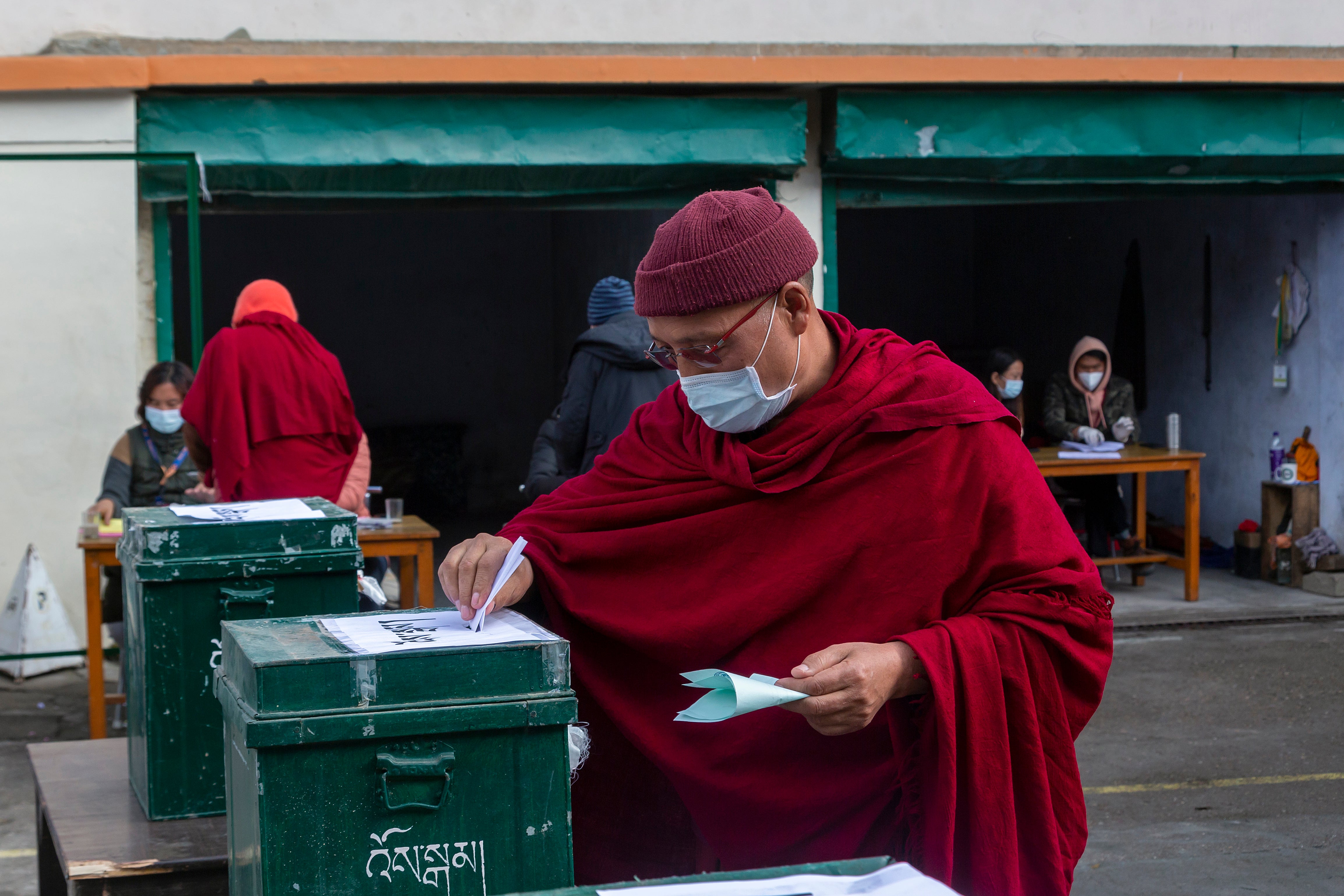Tibetans in exile vote in India for their political leader
Hundreds of Tibetans in exile have braved the rain and cold in India’s northern city of Dharmsala, where the exiled government is based, and voted for their new political leader as the current officeholder’s five-year term nears its end

Your support helps us to tell the story
From reproductive rights to climate change to Big Tech, The Independent is on the ground when the story is developing. Whether it's investigating the financials of Elon Musk's pro-Trump PAC or producing our latest documentary, 'The A Word', which shines a light on the American women fighting for reproductive rights, we know how important it is to parse out the facts from the messaging.
At such a critical moment in US history, we need reporters on the ground. Your donation allows us to keep sending journalists to speak to both sides of the story.
The Independent is trusted by Americans across the entire political spectrum. And unlike many other quality news outlets, we choose not to lock Americans out of our reporting and analysis with paywalls. We believe quality journalism should be available to everyone, paid for by those who can afford it.
Your support makes all the difference.Hundreds of Tibetans in exile braved the rain and cold Sunday in India’s northern city of Dharmsala, where the exiled government is based, and voted for their new political leader as the current officeholder’s five-year term nears its end.
The voters wore masks, maintained social distance and used hand sanitizer as they cast their ballots during the first round of the election. Many assisted elderly voters to fill the correct forms.
In this first phase of voting, two candidates for the top government post of president will be shortlisted, including 90 parliamentarians. The second and final round of voting will take place in April.
“By this we are sending a clear message to Beijing that Tibet is under occupation but Tibetans in exile are free. And given a chance, an opportunity, we prefer democracy,” said Lobsang Sangay, who will soon be finishing his second and final term as the Tibetan political leader “No matter what you do, the pride of Tibetans, the sense of Tibetans, is to be democratic and practice democracy.”
Formed in 1959, Tibet’s government-in-exile — now called the Central Tibetan Administration — has executive, judiciary and legislative branches, with candidates for the office of sikyong, or president, elected since 2011 by popular vote.
China says Tibet has historically been part of its territory since the mid-13th century, and its Communist Party has governed the Himalayan region since 1951. But many Tibetans say that they were effectively independent for most of their history, and that the Chinese government wants to exploit their resource-rich region while crushing their cultural identity.
The Dalai Lama, the Tibetans' exiled spiritual leader, and his followers have been living in Dharmsala since they fled Tibet after a failed 1959 uprising against Chinese rule.
Many young Tibetans are contesting the parliamentary election this year. As the Dalai Lama grows older, there is a growing realization among the Tibetan youth that they should participate more in the government.
“As somebody who has studied technology, I believe I can try and make the parliamentary communications more secure and fill the gaps in information database,” said Lobsang Sither, 48, who is contesting the current election.
Sither said that the previous governments have largely focused on the Tibetan diaspora and not enough on Tibetans inside Tibet.
“That has to change. Unless we have reliable information on the situation inside Tibet, we cannot formulate policies to assist Tibetans there,” said Sither.
China doesn’t recognize the Tibetan government-in-exile, and hasn’t held any dialogue with the representatives of the Dalai Lama since 2010. India considers Tibet as part of China, though it is hosting the Tibetan exiles.
Some Tibetan groups advocate independence for Tibet, since little progress has been made in dialogue with China.